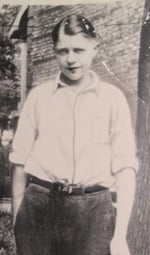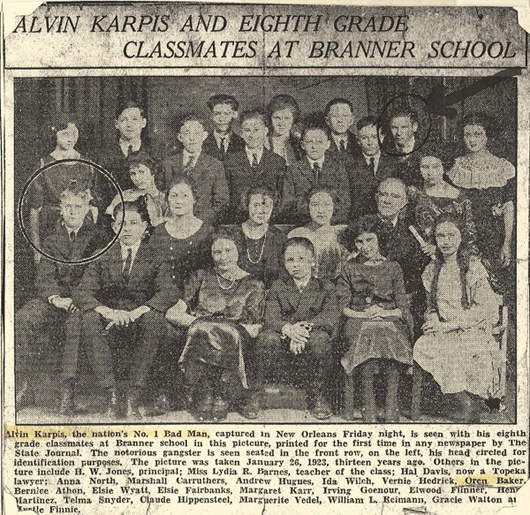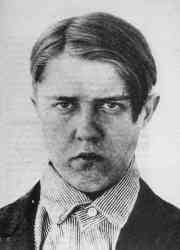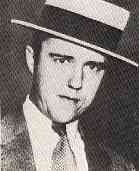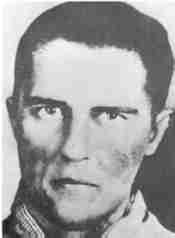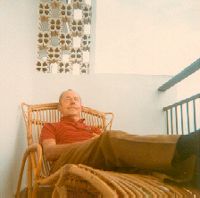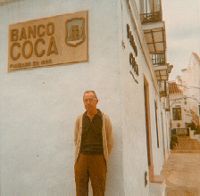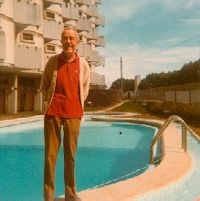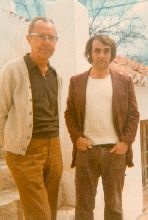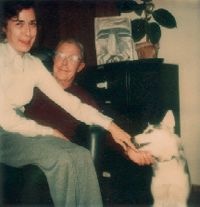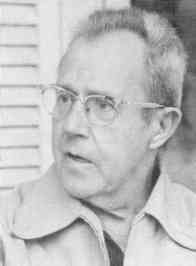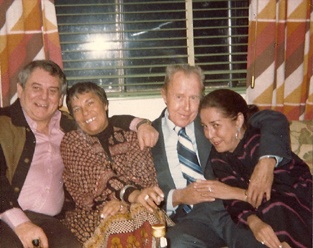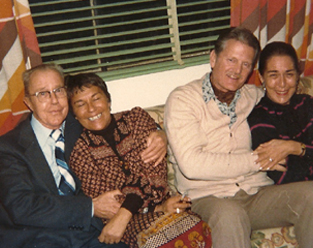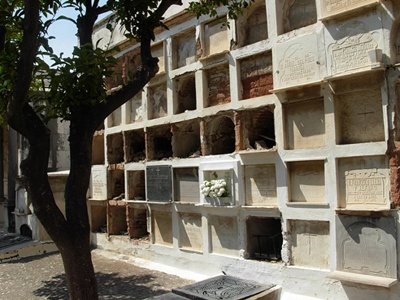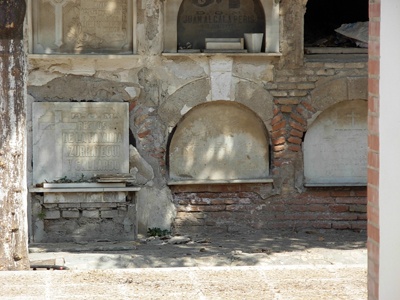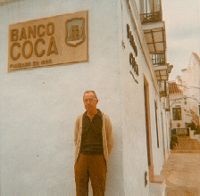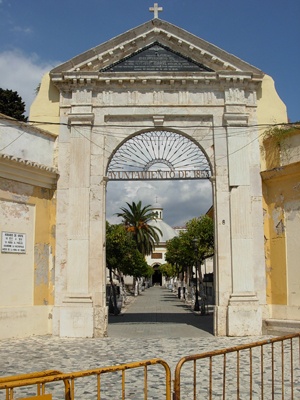Alvin Karpis - Public Enemy #1 - Prepared by Robert Livesey
Albin Karpowicz, the son of John and Anna Karpowicz, honest, hard-working immigrants from Lithuania via England and Canada to the USA, was born in Montreal, Canada on August 10, 1908.
His oldest sister, Mihalin had been born in London, England. Albin’s sister Emily was born, after him, in Grand Rapids, Michigan and his youngest sister, Clara, in Topeka, Kansas.
In Topeka, an elementary schoolteacher shortened his name to Alvin Karpis, because she claimed it was “easier to manage.” He kept the new name for the rest of his life.
Early 'Grade 8 Gang'
A few years ago a customer, Sharon Kaufman, ordered a copy of "On the Rock" and asked me to autograph it to her son, Roger. She explained that her father, Oren Baker, Roger's grandfather, had been a student in grade 8 with Alvin Karpis, and had been invited to join young Alvin's gang of criminal classmates.
The next year, I had another request for an autographed copy of "On the Rock." This was from Sharon's brother, Gene Baker, aka "Dirty Dog." Gene was kind enough to send me the newspaper photo of Alvin's grade 8 class (below) at Branner School. The class photo was taken on January 26th, 1923, (Alvin would have been 14 years old), in Topeka, Kansas. (It first appeared in a newspaper, The State Journal.) Alvin is in the front row left (circled). Oren Baker is in the back row (right), also circled. Gene, Sharon, and their sister, Rosemarie Lee, relate the following anecdote, as their father, Oren Baker, described it to them.
Oren Baker, nicknamed 'Bake,' used to hang out with Alvin and their buddies doing whatever boys did back then. Alvin was starting to get into plenty of trouble at that time, and had formed a little gang of delinquents who stole anything of value - such as local chickens. One day, Alvin invited Oren Baker to join his gang. Oren replied that he wasn't sure he wanted to, but he would sleep on it. The next day, Oren approached Alvin and explained that he decided not to get involved. Alvin's reply to the rejection was: "That's ok Bake, we don't need you anyway." That was when they parted ways.
The Path Not Taken
Oren Baker went on to become a minister. Gene reports that after his sister, Rosemarie, read this website, she commented: "Most interesting. I noticed the 33 years in prison; and Dad served as minister for 33 years. What a difference Christ makes in a life."
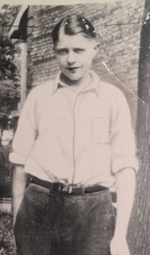 A young Alvin Karpis from an old photograph
A young Alvin Karpis from an old photograph
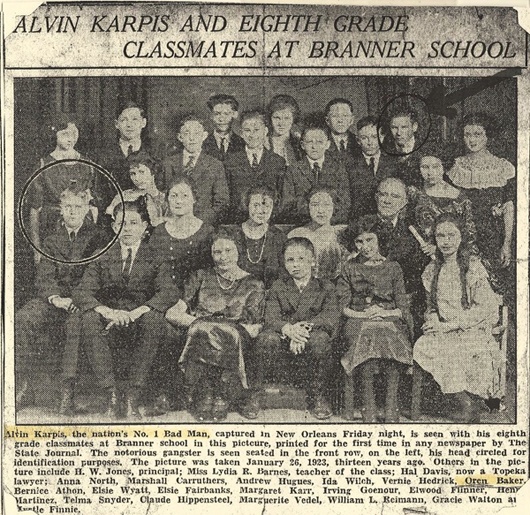 Alvin with his 8th grade class
Alvin with his 8th grade class
Alvin Karpis was breaking into stores and stole his first gun at the age of ten. When he reached his teens, he was already a criminal.
As a young teenager, Karpis loved trains and riding the rails from Iowa south through Missouri, Kansas, Oklahoma, and Arkansas into Louisiana and Mississippi, and from Ohio west through Michigan, Illinois, Wisconsin and Minnesota and into the Dakotas. Young Karpis was caught riding the roof of the Pan American into Florida and sentenced to 30 days on a chain gang. (his first criminal record)
In 1926, at the age of eighteen, he was captured while robbing a warehouse and sentenced to five to ten years in the reformatory in Hutchinson, Kansas, where he expanded and developed his education as a criminal.
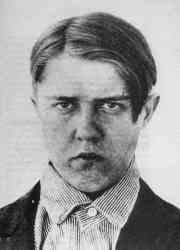 Karpis as a teenager
Karpis as a teenager
Alvin Karpis escaped from Hutchinson and within ten years became a crime legend.
He joined forces with Freddie Barker and his family to form the Karpis-Barker gang, known in crime mythology as the Ma Barker Gang. He robbed banks, had shoot-outs with the police, and kidnapped the wealthy for ransoms.
(Ma Barker was not a criminal but merely a devoted mother living with her sons. Only after the old woman was riddled with FBI bullets and killed with Freddie at their home in Florida on January 16, 1935, did the authorities start the rumour that she was the mastermind of the gang.)
After the death of Ma and Freddie, Karpis continued his career. At one time, Karpis was wanted for murder in fourteen different states. The media nicknamed him Old Creepy or Creepy Karpis.
In 1935, Karpis became the fourth and last of the famous 1930's criminals to be named "Public Enemy # 1. The first three were all friends and associates of his who only lasted a few months after they were given the title. They were each killed violently by the FBI: John Dillinger, Pretty Boy Floyd, and Baby-Face Nelson. Karpis' career lasted 5 years. On November 7, 1935, he purchased an airplane and hired a pilot to fly him to and from Garrettsville, Ohio, where he performed the last great train robbery in American history, obtaining $ 46,000 in cash.
Alvin Karpis described his criminal career in the book, Public Enemy Number One: The Alvin Karpis Story, published in 1971.
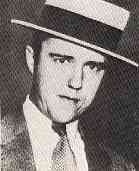 Alvin "Creepy" Karpis
Alvin "Creepy" Karpis
On May 1, 1936, twenty-eight FBI agents arrested Alvin Karpis in New Orleans. They were preparing to storm the apartment where he was hiding out and kill any suspects inside, when Karpis, unaware that the police were outside, unexpectedly came out onto a crowded downtown street and got into his car.
Unable to open fire in the crowded street, the waiting agents quickly surrounded the car and the unarmed Karpis, facing dozens of guns, was captured.
J. Edgar Hoover had sworn he would personally capture Karpis and took the credit to enhance his reputation and career. Alvin Karpis described the scene of his arrest and, after the agents had captured him, added: “I noticed someone peeping around the corner of a building. Several agents began shouting... It’s OK! Come on Chief! We got him! You can come out now!”
At that time J. Edgar Hoover emerged and took the official credit for the arrest.
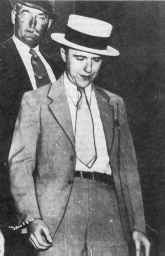 Karpis in Handcuffs
Karpis in Handcuffs
Alvin Karpis received a life sentence on a kidnapping charge to be served in the mysterious, super prison in San Francisco Bay - Alcatraz.
Alvin Karpis spent more time in Alcatraz, (26 years), than any other prisoner. He arrived within a few months of its opening and stayed until a few months before it closed, when he was transferred to another federal prison, McNeil Island, in the fall of 1962.
In the early years at Alcatraz, other inmates were criminals such as Al Capone, Doc Barker and Machine-Gun Kelly. At McNeil Island, he spent another seven years (total of 33 years in prison), where a young inmate named Charles Manson persuaded the old gangster to teach him how to play guitar.
Alvin Karpis described his prison career in the book, On the Rock, originally published in 1980; recently re-published in paperback and available from this website.
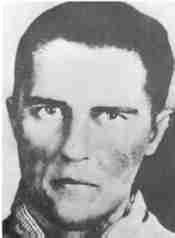 Karpis in Alcatraz
Karpis in Alcatraz
Alvin Karpis was released from prison in 1969 and, because he had never been given official immigrant status in the USA, he was deported to the country of his birth, Canada.
In Canada he wrote the first book about his criminal career, Public Enemy Number One: The Alvin Karpis Story, with a Montreal reporter, Bill Trent. (published in 1971)
Within a few years, Alvin Karpis retired to Spain where the weather was pleasant year round and he could live frugally on his limited budget.
It was in the mid 1970s that I became involved and met Alvin Karpis. I was a high school teacher in Mississauga, Ontario, Canada. Some of my students, who were delivering pizza for a local Italian owner, had told him that I wrote books. (textbooks at that time) He invited me over to have a free meal to discuss writing a book. I accepted the invitation hesitantly, thinking I did not want to write “One Hundred and One Ways to prepare Pizza.”
But he informed me that he had an apartment on the Costal de Sol, in Spain and that he had a tenant named Alvin Karpis, who had been Public Enemy #1 in the USA back in the 1930s. It was Karpis who wanted to write a book, about his prison career in Alcatraz.
I agreed to travel to Spain for a week to meet Alvin Karpis. I did not want to commit myself to writing a book with a former criminal and killer without first meeting him face to face and deciding whether or not he had a story to tell.
When I arrived in Spain, Alvin Karpis was not what I expected. There were few signs of the criminal/killer whom I had anticipated. Instead there was a pleasant, grand-fatherly individual who was well read and informed (due to 33 years in prison with nothing to do but explore the prison library). He could communicate at ease with all types of individuals. (again the ability to survive in prison in close quarters with dangerous, sometimes insane inmates, as well as former professionals who ended up behind bars had served him well.)
Aside from being friendly and easy to talk to, it was clear that Al had a photographic memory for events and dates and an endless number of interesting anecdotes about his spectacular criminal and prison career. I agreed to write the book with him and returned to Spain the next summer to spend two months recording hundreds of tapes describing his experiences in Alcatraz.
Alvin Karpis travelled to Canada on two occasions after I had written the original manuscript of On the Rock, to proof read it and ensure that it was accurate.
When I had visited him in Spain, he always had a different girlfriend staying with him in the apartment. They were usually wealthy women about twenty years younger than he was and attracted to him. The first one I had met was Pat, who drove her Jaguar sports car on the winding roads along the Mediterranean coast.
While in Canada reading the manuscript, Al stayed at my home. He brought another girl friend, Nancy, from Chicago to keep him company. It was during one of these visits that I arranged for him to make a one hour television documentary, Alvin Karpis: Public Enemy #1, (Video) with producer Bob Gibbons of the Canadian Broadcasting Corporation. (This rare interview with the only surviving Public Enemy #1 from the 1930s is available from this website and allows the viewers to see and judge the character of Alvin Karpis for themselves.)
Alvin Karpis died in Spain on August 29, 1979. I have seen his death described as a suicide, but that is not true. Al was not the type of person to give up and take his own life. He was awaiting the publication of the book that I wrote with him, On the Rock; but most important, he was a survivor, he had survived 33 depressing years in prison.
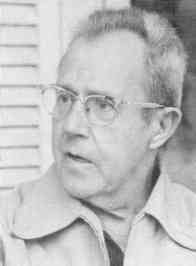 Karpis in 1979
Karpis in 1979
Thanks to Richard Kudish, a very dedicated and thorough crime historian and author, I was informed that the Chicago Sun-Times retracted its original suicide story on August 30, 1979 in a column "World/nation digest" page 24.
The following is verbatim from the Chicago Sun-Times:
"GANGSTER ALVIN KARPIS APPARENTLY DIED OF NATURAL CAUSES POLICE SAID, CONTRADICTING EARLIER REPORTS THAT HE HAD COMMITTED SUICIDE BY TAKING AN OVERDOSE OF SLEEPING PILLS. KARPIS, TRIGGERMAN FOR THE NOTORIOUS MA BARKER GANG THAT TERRORIZED THE MIDWEST WITH BLAZING MACHINE GUNS IN THE 1930'S WAS FOUND DEAD TUESDAY AT HIS HOME ON SPAIN'S COSTAL DEL SOL. HE WAS 71."
The death certificates in the original Spanish and translated into English state clearly that Alvin Karpis died of a heart attack. The "suicide misinformation" originated from media speculation when it was reported that a bottle of prescription "sleeping" pills were found in his two bedroom apartment in Spain. They belonged to his last girlfriend, Nancy, who had left about a week before his death. Also, the bottle of pills was full, not empty.
Alvin's American attorney, James E. Carty, had arranged for his release from prison and extradition to Canada. The James E. Carty Collection at the Washington State University, Library-Archive, in Vancouver, WA., was prepared by Archive Specialist, Robert Schimelpfenig, who kindly supplied copies of the death certificates and granted me permission to display them here.
 Extract from certificate of death in English from the James E. Carty Collection at WSU Vancouver Library-Archive.
Extract from certificate of death in English from the James E. Carty Collection at WSU Vancouver Library-Archive. Certified copy of death certificate in English from the James E. Carty Collection at WSU Vancouver Library-Archive.
Certified copy of death certificate in English from the James E. Carty Collection at WSU Vancouver Library-Archive. Extract from certificate of death in Spanish from the James E. Carty Collection at WSU Vancouver Library-Archive.
Extract from certificate of death in Spanish from the James E. Carty Collection at WSU Vancouver Library-Archive. Certified copy of death certificate in Spanish from the James E. Carty Collection at WSU Vancouver Library-Archive.
Certified copy of death certificate in Spanish from the James E. Carty Collection at WSU Vancouver Library-Archive.
An English gentleman, Mr. Neil McKay, who was intrigued with the life of Alvin Karpis and who holidays in Spain, set out with his wife Maureen on a quest to discover plot #2300 where Alvin Karpis was laid to rest. He took the following photographs of the San Miguel Cemetery in Malaga, Spain. Neil explains that in the cemetery there are choices of: a grave - a single occupation, below ground; a niche - a single occupation above ground; and a crypt - multi occupation for a family. Alvin's plot #2300 was a niche, but it could not be located because areas of the cemetery were undergoing renovations. These photographs of the San Miguel Cemetery are the copyright property of Mr. McKay; they cannot be used or reproduced without his written consent.
In September 2009, determined, to accomplish his goal, Neil contacted an official at the cemetery associated with the 'Friends of San Miguel,' but received only a cursory e-mail in Spanish. Neil assumed that it stated the person would investigate and reply.
When Neil had received no reply by March 2010, I tried to help with the assistance of a friend in Texas, Professor James Pauff, who arranged for a translation of an e-mail message which I sent to the San Miguel official. No reply. After several months, I sent a second request for information about the grave. On May 7, 2010, I received a brief response similar to the one that Neil had received.
Another Englishman, Tom Prior, was also trying to help us locate the grave of Alvin Karpis. Tom alerted me to a Spanish custom. He explained that:
"families in Spain must prepay fees in order to obtain a long term lease for the burial plot, otherwise the remains are eventually removed and reinterred in a new grave in the mountains."
I enjoyed Tom's concluding observation: "It seems Karpis is as hard to find dead as he was alive."
Finally success, although 'happy' might not describe it. In January 2011, as he was preparing for a return trip to Malaga, Neil McKay had an inspiration. He contacted the Spanish Tourist Office in London, to enlist their aid in locating the grave of Alvin Karpis. Neil received the following from Julio Ganzalez of the Spanish Tourist Office who was gracious enough to translate the response from the San Miguel Cemetery:
"Alvin Karpowicz, the famous gangster known as Alvin Karpis, was buried in the niche (plot #2300) in 1979. The 28th of May 1999, when his permency was expired, and nobody claim his rests (remains), he was buried in a communal mass grave. Because of this now is impossible to find his rests (remains) or his tombstone."
Whether Alvin Karpis is content with his final disposal, or whether his restless spirit is seeking retribution is a matter left to fictional imagination. I am certain that he is grateful, as am I, for the diligence and perseverance of Neil and Maureen McKay in discovering the facts. I also thank Tom Prior and James Pauff for their contributions to the search and discovery.
The elusive Karpis will never be found, even after his death.
Alvin's last girlfriend, Nancy, had left Spain only a week before his death. She contacted me from Chicago when she returned and later sent me the last photographs taken of Alvin Karpis with her and another couple who were friends and neighbours in the apartment building.
Last photographs of Alvin Karpis taken in the Summer of 1979, just before his death:
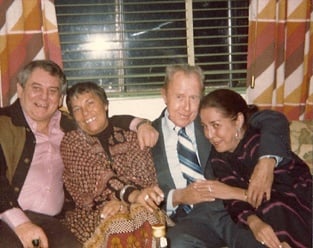
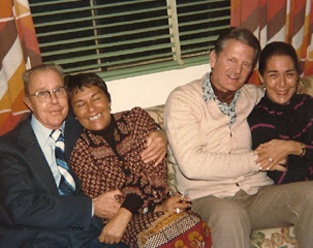
Recommended for Crime and Punishment Studies,
Senior High School, College, University
Coming Soon!
Written by Robert Livesey, author of On the Rock.

